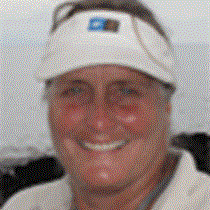This morning Captain Teran of the National Geographic Islander hauled up the ship’s anchor just before dawn and the ship moved smoothly to the east and our anchorage at the base of Volcano Alcedo. This is one of my favorite places on earth and an area I know exceedingly well. I spent a year and a half camped on the rim of Alcedo while doing field research for my PhD on the effect the introduced donkeys were having on the giant tortoises. At recap hour today I shared my experiences with this group of guests and entertained them with my photos from my time on the volcano three decades ago!
After breakfast we disembarked on a steep black sand beach and had a choice of a two mile hike or a shorter ¾ mile walk. This visitor’s site at Urbina Bay is an area of geological uplift. In 1954 a section of the shoreline was instantaneously pushed several meters up and out of the ocean by magma shifting below the surface. Those of us who accompanied naturalists Walter, Jonathan and Greg (on either fast or slow excursions) on the longer hike that went along the coast observed a group of large coral heads that are high and dry and slowly deteriorating in the hot sun. On the interior section of the long hike they found several large land iguanas and some of us spotted a couple of young giant tortoises. Finches, yellow warblers, and mockingbirds flitted from tree to tree and once the cloud cover blew off the sun shone down relentlessly and it turned into a hot, bright day.
I lead the group of guests who chose the short walk option and we were delighted to find two small tortoises sleeping in nests of dried leaves in the shade. Several months ago there were a dozen tortoises to be seen here along the trail in Urbina, but as the rains have stopped and the green vegetation has dried back here at the coast, most of the tortoises have climbed the volcano’s slopes and returned to the more humid and lush highlands. We too found several large yellow male land iguanas and admired the yellow flowering Cordia and singing of the yellow warblers as we hiked.
At the beach some of us went for a swim and enjoyed the waves and refreshingly cool water after the hot outings. Jonathan and panguero Horacio took a group of kids in one Zodiac to take turns learning to drive the outboard motors and steer the Zodiac. They had a grand time bouncing on the waves and circling the ship at anchor and each earned a Zodiac license signed by the Captain.
In the afternoon we had many options to choose from. Those who went snorkeling found penguins and cormorants, a small shark, sea turtles, and playful sea lions. The water was chilly but the visibility was fairly good and everyone who went out with Greg and Walter was very glad that they had! Jonathan and Santiago helped the kayakers board their bright yellow boats and during this afternoon two groups of guests enjoyed the calm conditions and abundant wildlife as they paddled along the shores of Tagus Cove.
In the late afternoon we offered a hike up the slopes behind Tagus Cove for a view of Darwin’s crater lake. We saw finches, lava lizards, and mockingbirds and at the end of the trail had a lovely view to the north of Darwin and Wolf Volcanoes. Panguero Antonio and I took a group of guests on a Zodiac ride along the north coast. We ventured into a cave and admired the colorful sponges and coralline algae encrusting the walls at the tide line. Travelling slowly back towards the ship we found nesting pelicans, resting blue-footed boobies, and several Galapagos penguins. As the sunset and the late afternoon light turned golden, all the groups – the hikers, kayakers and Zodiac riders – returned contentedly to the National Geographic Islander. The Captain set off soon and we headed north, then east for the older central and eastern islands leaving the cormorants, penguins, and volcanoes behind. Walter asked the Captain to turn off the ship’s lights after dinner and showed us the stars. A magnificent way to end yet another wonderful day in the islas encantadas!









